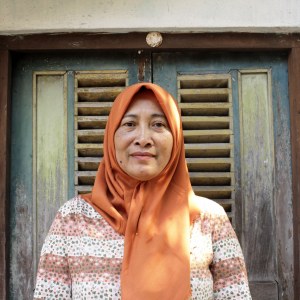The Government of Indonesia has pledged to end hunger in all its forms and achieve food security to meet the Sustainable Development Goal (SDG)- 2 targets by 2030. Concerted efforts to ensure fair and better access to food while promoting sustainable agriculture are central to achieve it, in which Rikolto in Indonesia takes part through Food Smart Cities programme.
Connecting the dots in our food systems
Connecting the dots in our food systems

Welcoming Rikolto in his office, on Monday (8/7), Anang Noegroho, Director for Food and Agriculture, Ministry of National Development Planning/National Development Planning Agency (Bappenas) pinpointed the country’s challenges, plans and how city-level pilots can contribute to creating sustainable food systems.
“Indonesia has a vision that in 2030, our food system is based on food-diversity, instead of monoculture. Achieving this will require a development and promotion of local food system, particularly in our efforts to meet the Sustainable Development Goal number 2 to end hunger. There are 5 main indicators, two of which are ensuring access to safe, nutritious and sufficient food all year round, and improving crop productivity, while maintaining genetic diversity of seeds and cultivated plants.”

In response, the government has been developing a 2020-2024 National Medium-Term Development Plan (RPJMN) in which the topic of food has gotten attention. Several activities are already in the pipeline, one of which is biofortification to increase zinc levels in rice. Zinc is an essential micronutrient for healthy growth and development. Introducing high-zinc rice, according to Mr Nugroho is part of the country’s approaches to provide nutritious food and combat stunting. He also highlights the importance of food governance system, where “we need to find interdependence between urban and rural linkages.”
Echoing that statement, Rikolto’s Food Smart Cities programme attempts to create urban-rural linkages to increase people’s access to locally grown, sustainably sourced and nutritious food while tackling food waste. The Initiative wishes to see a food system model that works at the city level, involving a wide array of stakeholders- government, private sector, civil society organisations, research institutes and mostly local communities.
“Rikolto’s contribution through Food Smart Cities programme is connecting the dots. We bring together relevant stakeholders, so they come up with strategic and collective efforts to advocate for change in the food system.”


Creating rural-urban linkages
“Chemical use for paddy cultivation in this area was high and impacted soil quality. We shift to organic farming because we want to produce rice that is healthy and to recover soil condition.”

In Solo, a city 600 kilometres apart from Indonesia’s capital of Jakarta, those efforts have been nurtured for the past two years by linking healthy food producers in rural areas to urban consumers. Working with APOB (Boyolali Organic Rice Association), Rikolto supports the organisation to produce organic rice.
So far the organic rice has attracted three main buyers from Jakarta and Semarang who regularly buys from APOB. Demand from local consumers in Boyolali is also growing. “Consumers from Boyolali are individuals who come and buy directly from us because it is cheaper to buy from farmers rather than from supermarket,” Murbowo adds.
Murbowo doesn’t hide the fact that the market for organic rice is still limited. In Legi Market, a central market in Solo –around 25 kilometres of Boyolali- it is almost impossible to find organic rice.
Every night, rice comes in a bulk from neighbouring districts such as Klaten, Sragen and Boyolali. While at a supermarket, the price of organic rice is quite high, compared to the price set by APOB. In general, organic rice is 50-70 per cent higher in price than conventional rice.
Despite the challenges, Murbowo sees an opportunity to expand the organic rice market. “To reach more people, we can sell several types of rice quality. For instance, we sell the rice with a broken percentage of less than 10% to our regular buyers. For the general public, we can sell the one with a broken percentage of 10-20%. The fracture itself doesn’t affect nutrition content,” he adds.
“The Government of Solo support is key to this movement. Our collaboration with stakeholders works well because we have a shared vision, so we work based on our function, not based on money."

Another potential channel to market the rice amongst our consumer group networks. However, Titik Eka Sasanti of Gita Pertiwi says that sales are still low as most consumers opt for cheaper rice. Acknowledging that, we also foster people’s awareness of food literacy, as to encourage them to make healthier food choices.
Campaigns and educational activities targeting urban consumers, school-age children, women’s groups, and elderly people have taken place for the past two years. So far, the Food Smart Cities programme has received support from the government, seeing the initiative as an important and strategic move that is in line with the national development agenda.
9 cities in 7 countries are leading the transition to sustainable food systems
Read and join the movementContact




